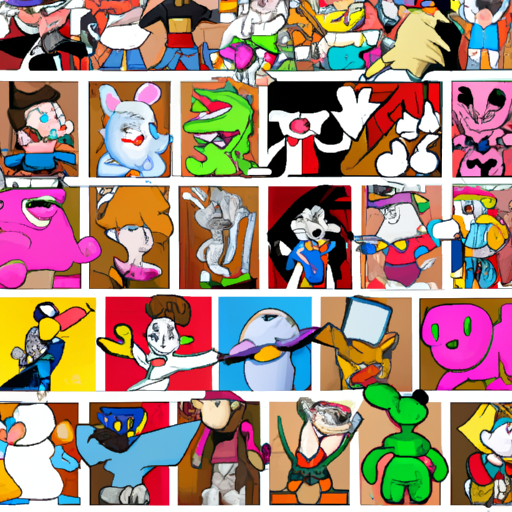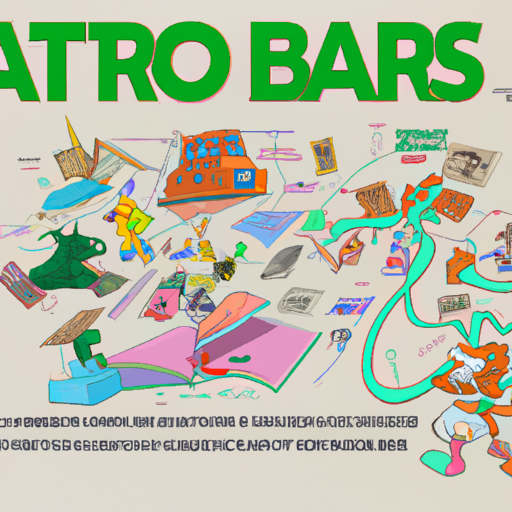Delve into the enchanting world of 80s cartoons and their profound impact on pop culture. This blog post explores how these animated shows have shaped a generation, influenced storytelling, and left an indelible mark on entertainment. Journey with us as we revisit these timeless classics and their enduring influence.
'I Have the Power!' – The Influence of 80s Cartoons on Pop Culture
The 1980s marked a golden era for cartoons that not only entertained but also left a lasting impact on pop culture. Shows like "He-Man and the Masters of the Universe" and "ThunderCats" captivated audiences with their larger-than-life heroes and epic battles between good and evil. These cartoons were not just animated series; they were cultural phenomena that inspired a generation of children to believe in the power of courage, friendship, and justice.
The colorful characters and imaginative worlds of 80s cartoons became ingrained in the collective memory of a generation, shaping their beliefs, values, and even fashion choices. The catchphrases like "By the power of Grayskull!" and "ThunderCats, ho!" became iconic symbols of heroism and empowerment, resonating with viewers long after the shows had ended. The impact of these cartoons extended beyond the screen, influencing toys, merchandise, and even spin-off series that kept the spirit of the 80s alive for decades to come.

A montage of iconic 80s cartoon characters
Why are these shows etched in our minds? The Psychology Behind Memorable Characters
The enduring appeal of 80s cartoons lies in the psychology behind the creation of memorable characters that resonated deeply with viewers. From the noble Prince Adam transforming into the mighty He-Man to the conflicted anti-hero Lion-O leading the ThunderCats, these characters were crafted with intricate backstories, relatable flaws, and aspirational traits that made them stand out in the minds of the audience . Their struggles, triumphs, and moral dilemmas mirrored the complexities of real-life situations, allowing viewers to connect on a personal level.
The concept of archetypes played a significant role in shaping these memorable characters, with each hero or villain embodying universal themes and symbols that tapped into the collective unconscious of the audience. Whether it was the wise mentor figure like Splinter from "Teenage Mutant Ninja Turtles" or the cunning antagonist like Skeletor from "He-Man," these archetypes served as psychological touchpoints that resonated with viewers on a subconscious level, evoking deep emotional responses.
Can we ever forget these shows? The Art of Storytelling in Animation
The art of storytelling in 80s cartoons transcended mere entertainment; it became a powerful medium through which complex themes, moral lessons, and social commentary were woven into the fabric of animated worlds. Shows like "Transformers," "GI Joe," and "The Smurfs" utilized episodic storytelling to engage viewers in ongoing narratives that unfolded over multiple episodes, creating a sense of continuity and investment in the characters' journeys. The episodic nature of these shows allowed for character development, plot twists, and emotional arcs that kept audiences eagerly anticipating each new episode.
Moreover, the storytelling techniques employed in 80s cartoons often featured strong moral messages and ethical dilemmas that challenged viewers to think critically about issues such as friendship, loyalty, courage, and the consequences of one's actions. By presenting these moral quandaries in a fantastical setting, animated shows were able to explore complex themes in a digestible and engaging manner that resonated with viewers of all ages. The use of allegory and metaphor in storytelling allowed for deeper layers of meaning to be conveyed, encouraging viewers to reflect on the broader implications of the characters' choices and the lessons they imparted.

An illustration depicting the narrative structure of a popular 80s cartoon
'More than Meets the Eye' – Innovative Animation Techniques of the 80s
The 80s were a groundbreaking era for animation, with studios pushing the boundaries of traditional techniques to create visually stunning and technologically advanced cartoons. One of the most iconic examples of this innovation was the use of cel animation, a labor-intensive process that involved hand-drawing characters and backgrounds on transparent sheets of celluloid. This technique allowed for intricate detail, vibrant colors, and fluid movement that brought the characters to life in a way that had never been seen before. The meticulous craftsmanship of cel animation sets a new standard for quality in animated storytelling, captivating audiences with its artistry and attention to detail.
In addition to cel animation, the 80s also saw the rise of computer-generated imagery (CGI) in animated shows like "The Transformers" and "Voltron." These pioneering series integrated CGI elements seamlessly with traditional animation, blending the hand-drawn characters with computer-generated backgrounds and special effects to create a visually dynamic and futuristic aesthetic. The use of CGI in 80s cartoons paved the way for the digital animation techniques that would revolutionize the industry in the decades to come, showcasing the potential of technology to enhance the visual storytelling capabilities of animated shows.
The 80s cartoons have undeniably left a significant imprint on pop culture and our collective consciousness. Their innovative storytelling, unforgettable characters, and groundbreaking animation techniques have not only shaped a generation but continue to inspire the entertainment industry. The legacy of these shows extends far beyond their original broadcasts, reminding us of a time where imagination knew no bounds.

